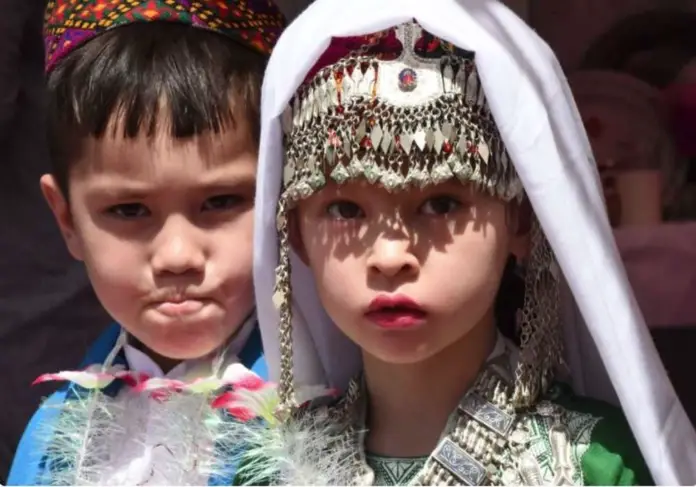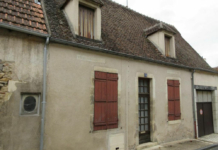With optimism, the Hazara community is struggling for a better future to continue their achievements and growth in business, sports, education, and politics. This community is successful in claiming a respectable name in national and regional history. Our people have remained one of the most famous tribes to participate in martial arts and other sports competitions.
Hazaras are one of the ancient ethnic groups living in Pakistan, Afghanistan, and Iran, but a great portion of their population lives in Central Afghanistan, known as Hazarajat or Hazaristan. Due to Turko-Mongolic looking features of Hazaras, many historians believe that the Hazaras are descendants of Changez khan and his forces. There is much more to know about the ancient historical traces and tribal system of the Hazaras.
The tribal system of the Hazaras is ancient like other ancient races and civilizations. Anciently, Hazaras were known through different names by their different neighbors. In ancient Persian, Hazaras were known as the Khawari, for Greeks they are Dai-Dahai and for the Chinese, they are Yueh-Chi. After the Scythians, the rise of the Empire of Kushan is an important landmark in the History of Central Asia and the Hazaras.
Known to Chinese historians as Kuei-Shang, they were one of the important tribes of the Great Yueh-Chi, who were driven out of their original homeland by another winning tribe – the Xiongnu – and had settled in northern Balkh. They drove away Balkh rulers and became the new rulers of the region. Kushans are considered to have been one of the central tribes, who have played a part in the formation and development of Hazarajat as an ethnic group.
Dai-Dahai is still widespread in the tribal formations of present-day Hazarajat tribes. The main Dai tribes within the Hazaras are Dai-Kundi, Dai-Zangi, Dai-Zeeniyat, Dai-Chopan, Dai-Khitai, Dai-Kalan, Dai-Bodkhan, Dai-Naw, Dai-Lah, Dai-Manara, Dai-Abound, Dai-Berka, Dai-Mirdad, and so on. This is just a little glimpse of the history of Hazaras. There are many details of every era, as history is very long.
The Hazaras speak the Hazaragi dialect of Persian, known as Dari. In the highlands of the Hazarajat, there are many other Hazaragi dialects contributing to the ancient Turkic, Mongolic, Sanskrit, and even Kushani terms, but the favorite literature to read and write within the Hazaras is Dari.
As Hazaras anciently and still populate junctions of the ancient Silk route between South Asia, Central Asia, and the Middle East, their importance in geography, demographics, trade, and politics is most significant. Anciently, the Hazaras used to control the ancient trade route started from Delhi on the East, Anatolia on the Northwest, Babylonia, Damascus, and Asuri in the west, Wakhan and Henan in Northeast, Makran, and Mehran, Sindh on the southeast, ancient Seestan in Southwest, Central Asia, Caucasus, and the Asia-minor region.
The stretch between Bamiyan city and Balkh is one of the most strategic and important junctions between South Asia, Central Asia, and the Middle East, populated by the Hazara ancestors. After the downfall of the empire system and the arrival of the Portuguese and British people, the main population of Hazaras was frozen and limited between Mashhad and Balkh and Bagram in the north. From Kabul to Kandahar in the East. From Kandahar to Helmand and Herat in the South and from Herat till Mashhad in the West.
Later due to wars and the divide and rule policies of Ahmad Shah Abdali, the Qandahar, Farah, Helmand, Seestan, and other border areas got captured by him and distributed as war booty between the Afghan migrants, who helped Abdali in the war against the Hazaras. Later, Amir Abdul Rehman, a cruel king, launched a large-scale genocide against the Hazaras with the help of the British, when the king signed the Treaty of Gandumak.
The Afghan king set out to bring Turkistan, Hazarajat, and Kafiristan regions under his control. He launched several campaigns in the Hazarajat due to resistance from the Hazaras, and he conducted a widespread campaign on its population, which resulted in 64 percent of the Hazara population being butchered or displaced by force. 65 percent of the Hazarajat lands were grabbed and distributed further within the Afghan gypsies and migrants, who joined the king’s forces against the Hazaras and took a major part in the Hazara genocide.
The war of Hazara resistance is famous as the dark era of Afghanistan’s history, which was the reason for the population deficiency of the Hazaras as a nation and the loss of much historical data and ancient libraries in Hazarajat, which were burned and looted by the Afghan king Abdul Rehman and the British.
There are many concepts about the word Hazara. In Persian dialect, hazar means thousand. Hazaras call themselves in their own language as ‘Azera’ or ‘Aazra’. Azer was the name of the father of Hazrat Ibrahim (A.S.) Also, Azer was used for the fire-worshipers, who were dominant in the region before Judaism, Christianity, and Islam in the region. The people of Azerbaijan call themselves ‘Azeri’ and Hazaras call themselves ‘Azera’.
Anciently, Hazaras have experienced most of the ancient religions like Tengrism, Shamanism, Zoroastrianism, Buddhism, and then Islam. Historians believe that the Hazarajat is a mountainous region between the Hindukush range, Pamir range, Wakhan range, Koh-e-Baba range, and Asia minor, and there are thousands of small and large rivers and natural canals going towards today’s Iran, Balochistan, Pakhtunkhwa, and Balkh region.
The Kabul River, Helmand River, Harirud River, and other large rivers are the main water reservoirs coming from the Hazarajat’s mountainous region. As such, the region is known as Hazarajat and the people are known as Hazaras.







